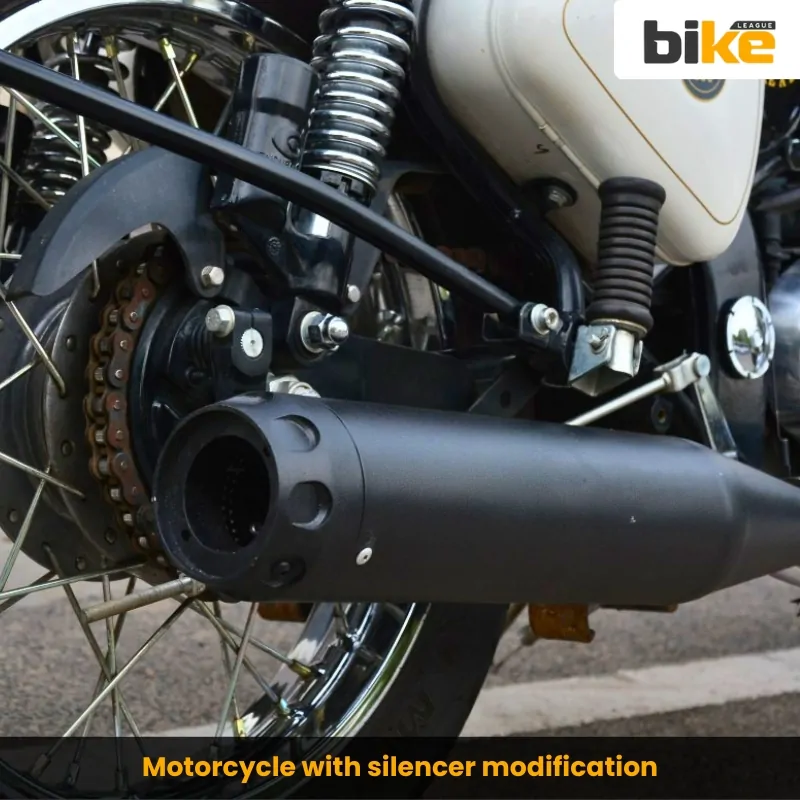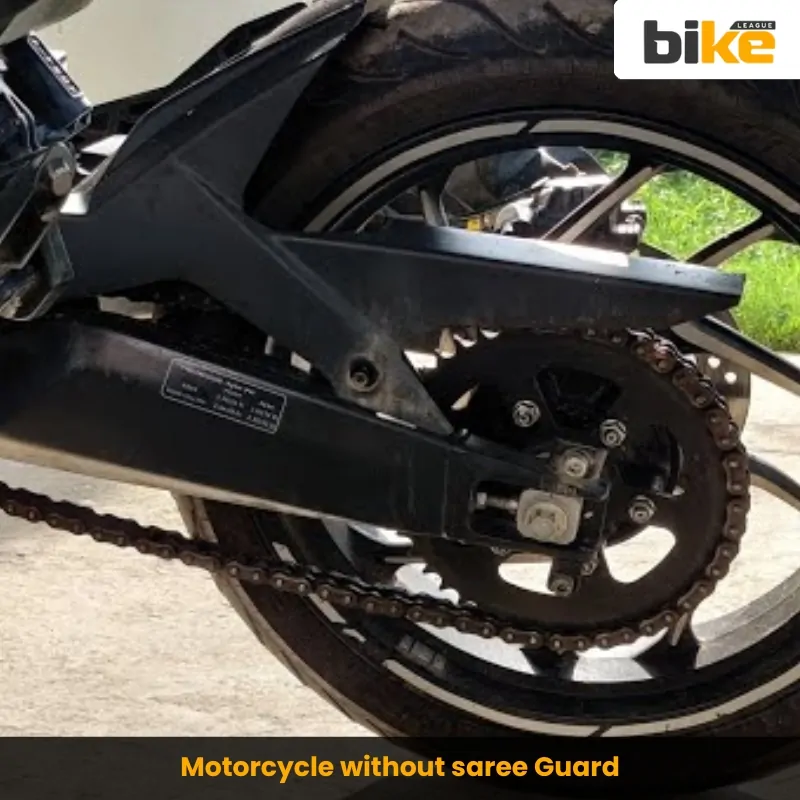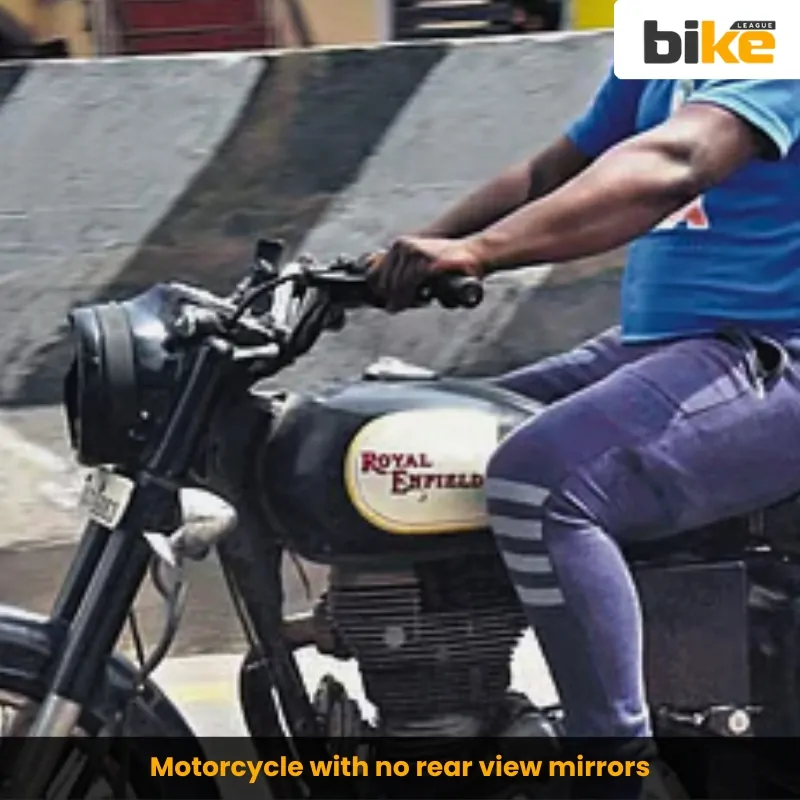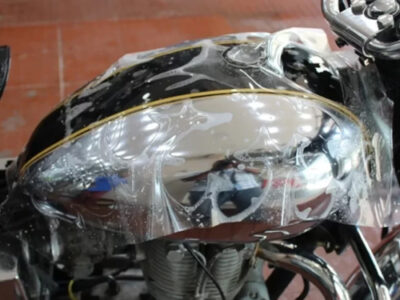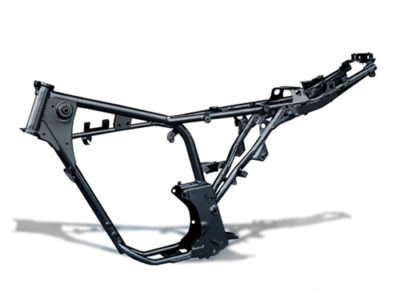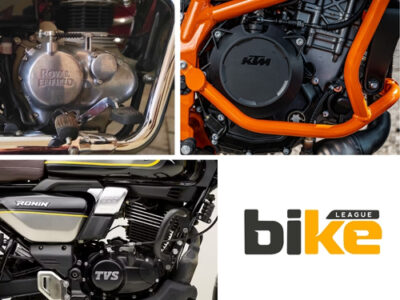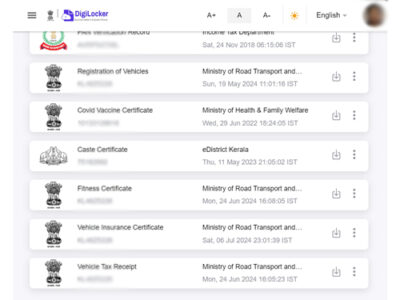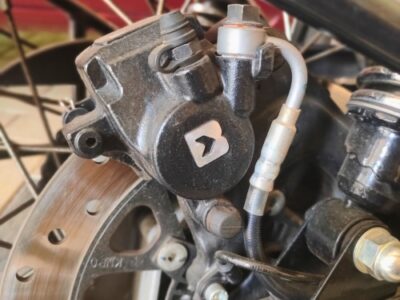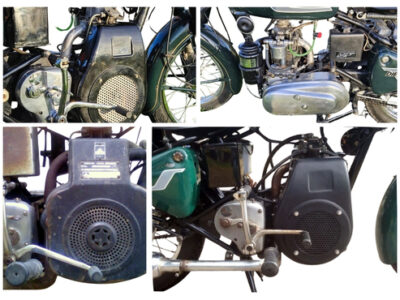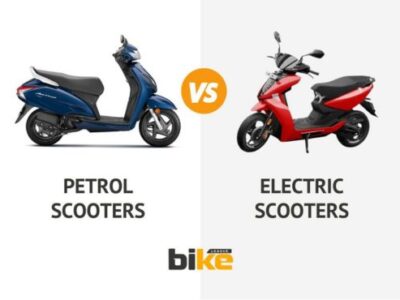
Long story short: Discover the essential information every rider needs to know about the dos and don’ts of bike modification, official forms, rules, modified bike registration and traffic rules. Stay safe and legal on the road with our detailed guide!
Bike modification in India has always been a popular trend among motorcycle enthusiasts. However, the landscape of bike modification is governed by a complex set of regulations and legal requirements. This article will discuss the legal aspects, process, and dos and don’ts of bike modification in India. So, let’s dig deep into the details.
What is Bike Modification and CMVR in India?
In India, bike modification involves any changes to a motorcycle’s structural, powertrain, electrical, or cosmetic features that alter its essential characteristics, such as the engine, chassis, dimensions, weight, and fuel system.
The Central Motor Vehicles Rules (CMVR), established in 1989 under the Motor Vehicles Act of 1988, set the standards and procedures for vehicle construction, maintenance, registration, licensing, traffic regulations, and emissions control for all motor vehicles in India.
Different types of bike modifications and their legality in India
Here are the different kinds of bike modifications and their legality in India in a detailed and tabled manner.
| Modification Type | Examples | Legal Status & Required Forms |
|---|---|---|
| Structural & Powertrain | Engine swaps; frame/chassis alterations; swing‑arm extensions | Prior RTO approval (Form 22C) is mandatory under CMVR Rule 47A; if there’s no decision within 7 days, approval is deemed granted. The authorised workshop then issues a Form 22G compliance certificate (Rule 112A), and you must file Form 22E to endorse the RC within 14 days (Rule 47B) |
| Adaptations for Persons with Disabilities | Side‑car fitment; outriggers; hand‑control kits | Permitted only via the same Form 22C → Form 22G → Form 22E chain, and must be performed by an OEM, authorised dealer or state‑approved workshop, per CMVR Rules 47A, 112A and 47B. |
| Retrofitment Kits (Fuel/Electric) | CNG/LPG conversion; EV battery modules | Kits must carry ARAI/BIS type approval under relevant AIS standards. Treated as an “alteration” → follow Form 22C → Form 22G → Form 22E pathway (CMVR Rules 47A, 112A, 47B). |
| Cosmetic | Repainting; vinyl wraps; non‑load‑bearing fairings; decals | Any paint‑colour change or wrap that alters body‑dimensions requires Form 22C/22E (CMVR Rules 47A/47B). Purely decorative add‑ons still mandate RC/insurance valuation updates under Section 52(3) of the Motor Vehicles Act |
| Lighting & Electrical | Aftermarket LED/HID headlamps; coloured lenses; ECU remaps | Any lamp colour, position or intensity change is an “alteration” → Form 22C → Form 22E (CMVR Rules 47A/47B). ECU remaps count as powertrain mods → full Form 22C → Form 22G → Form 22E chain |
| Tyre, Wheel & Suspension | Oversize tyres; rim swaps; lowering/raising kits | Changes affecting track‑width, ground‑clearance or tyre‑clearance must follow Form 22C → Form 22G → Form 22E (CMVR Rules 47A/112A/47B). Tyres must stay within the ply‑rating and dimension limits in your RC |
| Exhaust & Noise Control | Aftermarket mufflers; silencer cut‑outs | Any exhaust modification is an “alteration” → Form 22C → Form 22G → Form 22E. Silencer removal is strictly prohibited (“without silencer” offence) and attracts on‑the‑spot fines and seizure (CMVR Rules 112/113) |
| Safety Equipment & Accessories | Crash‑guards; panniers; anti‑theft alarms; horns | Removing mirrors, reflectors, horns or silencer baffles breaches CMVR Rules 100, 119, 120—fines up to ₹1,000 per offence. The addition of ARAI‑approved devices may earn insurance discounts but still requires RC/insurance update under Section 52(3) |
| Indirect‑Vision Devices | Rear‑view mirror or “device for indirect vision” per AIS‑001/002 | Mandatory on motorcycles manufactured on/after 15 January 2025: must comply with AIS‑001 (Part 1 Rev 2:2023) & AIS‑002 (Part 1 Rev 2:2023) under CMV (Second Amendment) Rules, 2024 |
1. Structural & Powertrain Mods
Examples
- Engine swaps or capacity increase
- Frame/chassis alterations
- Swing‑arm extensions
Legality & Process
- Prior Approval (Form 22C): Any change affecting an “essential characteristic” (engine, chassis, dimensions, weight, fuel system) must be pre‑approved by the RTO in Form 22C under CMVR Rule 47A. Approval is deemed granted if the RTO neither grants nor rejects within 7 days.
- Compliance Certificate (Form 22G): The workshop or OEM dealer must issue a Form 22G certificate confirming compliance with notified safety and emission standards (CMVR Rule 112A).
- RC Endorsement (Form 22E): Within 14 days of the compliance certificate, you must file Form 22E to record the alteration in your Registration Certificate (CMVR Rule 47B).
2. Adaptations for Persons with Disabilities
Examples
- Side‑car fitment
- Outriggers
- Hand‑control conversions
Legality & Process
- Permission is only with the same Form 22C → Form 22G → Form 22E pathway, and it must be carried out by an OEM, authorised dealer, or state‑approved workshop.
- Conform to detailed technical specs in MoRTH’s July 2008 Resolution on two‑wheeler adaptations for disabled riders.
3. Retro fitment Kits (Fuel‑Conversion, Electric)
Examples
- CNG/LPG kits
- EV battery modules
Legality & Process
- Kits must bear ARAI/BIS type approval under the relevant AIS standard.
- Treated as an “alteration” → follow Form 22C → Form 22G → Form 22E, same as structural changes.
4. Cosmetic Mods
Examples
- Repainting or vinyl wraps
- Non‑load‑bearing fairings
- Decals
- Seat upholstery
Legality & Process
- Form 22C/22E is Required for any paint‑colour change or wrap that alters body dimensions (CMVR Rule 47A/47B).
- Purely decorative add‑ons (stickers, OEM fairings) may be fitted without structural approval—but you must update your RC/insurance valuation under Section 52(3) of the MV Act.
5. Lighting & Electrical Mods
Examples
- Aftermarket LED/HID headlamps
- Coloured lenses
- ECU remaps
Legality & Process
- Any change in lamp colour, position or intensity (head/tail/brake indicators) is an “alteration” requiring Form 22C → Form 22E (CMVR Rule 47A/47B).
- Engine‑management flashes (ECU remaps) are treated as powertrain mods → full Form 22C → Form 22G → Form 22E chain.
6. Tyre, Wheel & Suspension Changes
Examples
- Oversize tyres
- Rim swaps
- Lowering/raising kits
Legality & Process
- Changes affecting track width, ground clearance or tyre clearance must follow the Form 22C → Form 22G → Form 22E route (CMVR Rule 47A/47B).
- tyres must remain within the ply rating and dimensions certified in your RC.
7. Exhaust & Noise Control
Examples
- Aftermarket mufflers
- Silencer baffle removal (“cut‑outs”)
Legality & Process
- Any modification to the fuel/emission system (including exhaust) is an alteration requiring the complete Form 22C → Form 22G → Form 22E process.
- Silencer removal is strictly prohibited under the MV Act (“Without silencer”)—penalties include on‑the‑spot fines and seizure.
- You must always hold a valid PUC certificate post‑modification.
8. Safety Equipment & Accessories
Examples
- Crash‑guards
- Panniers
- Anti‑theft alarms
- Auxiliary horns
Legality & Process
- Removing mirrors, reflectors, horns, or silencer baffles is a CMVR offence under Rules 100, 119, and 120. It attracts fines of up to ₹1,000 per offence.
- Adding ARAI‑approved anti‑theft or safety devices may earn insurance discounts—but RC/insurance must still be updated under Section 52(3).
9. Indirect‑Vision Devices
As of 15 January 2025, the CMV (Second Amendment) Rules, 2024 mandate that motorcycles manufactured on or after this date must fit either a rear‑view mirror or a “device for indirect vision” compliant with AIS‑001 (Part 1 Rev. 2:2023) and AIS‑002 (Part 1 Rev. 2:2023).
Official Forms Required for Bike Modification in India
Below is a concise table of the mandatory RTO forms you must use when modifying motorcycles in India, along with their purposes, the CMVR rules under which they’re prescribed, and direct download links from the official Parivahan (MoRTH) portal:
| Form No. | Name & Purpose | Relevant CMVR Rule(s) | Download Link |
|---|---|---|---|
| 22C | Application for Prior Approval – To request RTO permission for any alteration/retro fitment to your motorcycle’s essential characteristics (engine, chassis, dimensions, fuel system, etc.). | Rule 47A | Download FORM‑22C (PDF) |
| 22G | Compliance Report – To be submitted by the workshop/OEM dealer after completing the approved alteration, certifying conformity with safety, emission and noise standards. | Rules 112A, 126 | Download FORM‑22G (PDF) |
| 22E | Endorsement Application – To get your Registration Certificate endorsed with the details of the completed modification within 14 days of issuance of Form 22G. | Rule 47B | Download FORM‑22E (PDF) |
Key Legal Points
- No work may begin on structural or powertrain mods without filing Form 22C and getting RTO sanction (approval deemed granted if no reply within 7 days)
- Workshops/OEMs must issue Form 22G certifying the alteration meets CMVR safety, emission and noise norms
- You (the owner) must submit Form 22E within 14 days to update your RC; failure invites penalties and possible seizure
- Staying strictly within this three‑form process ensures your motorcycle modifications remain fully legal, per the Motor Vehicles Act 1988 and CMVR 1989 (as amended up to 2025).
In Total, there are altogether 60+ forms beyond those mentioned above. To get all these form details check out this parivahan forms link for more
Dos of Bike Modification in India
1. Get RTO Approval (Form 22C)
Before making structural or powertrain changes (like engine swaps or chassis alterations), apply for approval using Form 22C. The RTO has 7 days to approve or reject your request.
2. Obtain Compliance Certificate (Form 22G)
Once your modifications meet safety and emission standards, the workshop or OEM dealer must issue a Form 22G compliance certificate.
3. Endorse the RC (Form 22E) Within 14 Days
File Form 22E within 14 days after modifications to update your Registration Certificate and avoid penalties under CMVR Rule 47B.
4. Use Only Approved Kits & Parts
Ensure any conversion kit or major component used is type-approved by ARAI/ISI or MoRTH, as outlined in MoRTH’s 23 July 2008 resolution for 2-wheeler retrofits.
5. Emission & Noise Compliance
- Exhausts must meet CMVR Rules 112 and 115: No smoke, grit, or oil discharge toward the rider or bystanders.
- Noise limits for petrol bikes: ≤ 80 dB(A) per Rule 120; horns must meet BIS standards, no multi-tones or harsh sounds (Rule 119).
Always carry a valid PUC certificate after modifications.
6. Notify Your Insurer
Report any changes, including cosmetic ones like repainting, to your insurer. Failure to do so may invalidate claims under Section 52(3) of the MV Act.
Don’ts of Bike Modification in India
1. Stay Compliant with Manufacturer Specifications
Section 52(1) of the Motor Vehicles Act prohibits any changes that alter your vehicle’s RC details from the original OEM specs unless proper approval has been obtained.
2. Do Not Remove Safety Equipment
Removing mirrors (Rule 104), indicators, stop-lights (Rule 102), reflectors, horns (Rule 119), or silencer baffles (Rule 120) is illegal and can result in fines.
3. Avoid Loud Exhausts and Cut-Outs
Aftermarket exhausts that exceed noise limits or bypass the silencer are prohibited. Rule 232 (Maharashtra) and Rule 209 (Chhattisgarh) ban cut-outs, while Rules 119–120 regulate noise levels.
4. No Oversized Tyres or Wheelbase Alterations Without Approval
CMVR Rule 95 restricts tyre size and ply. Any changes that extend beyond the wheel arch or significantly alter your bike’s stance require RTO approval.
5. Don’t Swap Engines Without Sanction
Changing to a higher-capacity engine or a different fuel type beyond the ±7% tolerance requires type approval and RTO endorsement. Unauthorised swaps may lead to RC suspension or seizure.
6. Refrain from Fitting Unauthorised Accessories
Installing unapproved crash guards or bull bars poses safety risks. Strict action will be taken against such modifications in line with Section 52 & MV Act Sections 190-191.
Process for Registering a bike modification in India
1. Submit Form 22C
Download it from the Parivahan portal. Submit to your local RTO before any structural or powertrain work (engine swaps, chassis mods, major ECU remaps, fuel-conversion kits). The RTO has 7 days to respond; if there’s no reply, your modification is approved.
2. Get Form 22G
After completing the approved work, have an authorised workshop or OEM provide Form 22G certifying that your motorcycle complies with CMVR safety, emission, and noise norms. You need this certificate to update your Registration Certificate (RC).
3. File Form 22E
Within 14 days of the Form 22G date, submit Form 22E to the RTO to record your new specifications in the RC. Delay may result in penalties, RC suspension, or vehicle seizure.
4. Ongoing Compliance
- PUC Certificate: Always have a valid Pollution Under Control certificate.
- Insurance Update: Inform your insurer of any cosmetic or mechanical modification to keep your policy valid.
5. Key Prohibitions
- Silencer removal is illegal.
- Removing mandatory safety gear (mirrors, horns, reflectors) is strictly prohibited and may result in fines or vehicle seizure.
What are the penalties for modifying a motorcycle without following the legal processes in India?
Here are the main penalties you face if you modify your motorcycle in India without following the CMVR‑mandated process
1. Unauthorised Alteration (Motor Vehicles Act 1988, Section 52(4))
Altering any “essential characteristic” (structure, engine, fuel system, etc.) without RTO approval is punishable by up to six months imprisonment, a fine of ₹5,000 per alteration, or both.
2. Contravention of Chapter VII (MVA Section 53)
Selling, delivering or altering a vehicle in breach of CMVR/Act provisions (including by owners) can attract up to one year’s imprisonment or a fine up to ₹1 lakh per vehicle or both.
3. Failure to Report Alteration (MVA Section 52(3))
Suppose you carry out an approved alteration but do not submit Form 22E within 14 days. In that case, the RTO may suspend or cancel your Registration Certificate and levy additional penalties (per State RTO rules)—and your insurance becomes invalid.
4. Silencer Removal (“Without Silencer” Offence, CMVR Rule 232)
Removing or bypassing the silencer is an explicit offence—on‑the‑spot fines (varies by State, typically ₹1,000–2,000) plus vehicle seizure until you restore compliance.
5. Tampering Mandatory Safety Gear (CMVR Rules 100, 119, 120)
Removing mirrors, horns, reflectors, or indicators carries an on‑the‑spot fine of up to ₹1,000 per offence, and the bike can be impounded until the gear is restored.
Frequently Asked Questions about bike modification in India
1. Do I need RTO approval (Form 22C) before modifying my motorcycle’s engine or chassis?
Any changes to essential characteristics (engine, chassis, dimensions, fuel system, weight) require prior RTO approval via Form 22C under CMVR Rule 47A. Approval is automatically granted if the RTO does not respond within 7 days.
2. What is Form 22G, and who issues it?
Form 22G is a compliance certificate from the workshop/OEM under CMVR Rule 112A, confirming that modifications meet safety, emission, and noise standards. Only authorised dealers or state-approved workshops can issue this form.
3. When must I file Form 22E to update my RC after modifications?
File Form 22E within 14 days of the date on Form 22G to update your Registration Certificate. Late filing can lead to penalties and vehicle seizure.
4. Are cosmetic changes like repainting exempt from RTO notification?
No colour change or wrap that alters dimensions requires advance notice via Form 22C and post-modification notification via Form 22E under CMVR Rules 47A/47B. Insurers must also be notified.
5. Can I fit an aftermarket exhaust or remove the silencer baffle without approval?
No, removing the silencer is illegal under CMVR Rule 232. All exhaust modifications require Form 22C, then Form 22G, followed by Form 22E, and must comply with noise/emission standards.
6. Should I inform my insurer about minor modifications like decals or seat changes?
Yes, all modifications, even minor ones, must be reported to your insurer to maintain coverage under Section 52(3) of the Motor Vehicles Act.
7. Are LED or HID headlamp conversions allowed, and what paperwork is needed?
Yes, but changes in lamp colour, position, or intensity are considered alterations under CMVR Rule 47A. Obtain Form 22C approval and file Form 22E afterwards. If the change affects brightness or beam pattern beyond OEM specs, Form 22G may also be required.
8. What are the rules for changing a motorcycle’s tyre size or suspension height?
Modifications affecting track width, ground clearance, or tyre clearance are considered alterations under CMVR Rule 47A. Follow the Form 22C → Form 22G → Form 22E process, and ensure tyres meet the specifications in your RC (Rule 95).
9. What indirect-vision devices will be mandatory on new motorcycles starting January 2025?
Starting 15 January 2025, all motorcycles manufactured must have a rear-view mirror or an “indirect-vision device” compliant with AIS-001 and AIS-002 standards.
10. Who can issue Form 22G?
Only OEMs, authorised dealers, or state-approved workshops can issue Form 22G under CMVR Rule 112A. Unauthorised garages cannot issue this certificate, making your modification invalid if the form is not provided.
Myths about dos & dont’s of bike modification in India
Myth 1: Cosmetic changes don’t need RTO approval
Reality: Any change that affects body size or colour, including stickers and paint jobs, requires notification via Form 22C (prior) and Form 22E (endorsement) per CMVR Rules 47A/47B. According to MV Act § 52(3), insurers must also be informed.
Myth 2: You can remove the silencer for better performance
Reality: Removing the silencer is illegal under CMVR Rule 232. It can lead to fines and vehicle seizure. Exhaust modifications require completing the Form 22C →, Form 22G, → Form 22E process and meeting noise/emission standards.
Myth 3: Aftermarket ECU tunes are fine—just flash and ride
Reality: ECU remaps count as powertrain modifications under CMVR Rule 47A. You need Form 22C approval before tuning, a Form 22G compliance certificate afterwards, and to file Form 22E to update your registration certificate.
Myth 4: Changing tyres or suspension needs no paperwork
Reality: Changes affecting track width, ground clearance, or tyre clearance require the Form 22C → Form 22G → Form 22E process. Tyres must meet the RC’s ply rating and dimensions (Rule 95).
Myth 5: No need to update insurance for minor mods
Reality: Report all cosmetic or mechanical modifications to your insurer. Failing to do so may result in claim denial, as insurers depend on current RC specifications under Section 52(3) of the MV Act.
Myth 6: Only cars need rear-view mirrors; bikes don’t
Reality: Starting 15 January 2025, all new motorcycles must have a rear-view mirror or an AIS-001/002-compliant indirect vision device (CMV Second Amendment Rules, 2024).
Myth 7: Workshops don’t need to certify compliance—your word is enough
Reality: Only authorised workshops or OEMs can issue the Form 22G compliance certificate (Rule 112A). You cannot file Form 22E without it, making your modification legally invalid.
Myth 8: If the RTO doesn’t respond on time, skip endorsement
Reality: Failure to reply to Form 22C within 7 days implies “deemed approval,” but you must submit Form 22E within 14 days of completing the work (Rule 47B). Ignoring this can lead to penalties, registration certificate suspension, or seizure.
Other related articles from Bikeleague India
- Medical Certificate for bike riders in India: Essential Guide
- Bike fitness certificate guide – All you need to know
- Bike ownership transfer in India – step by step guide
- Ask Us
- Must have bike documents for travel in India
Conclusion
Bike modification in India requires careful consideration of safety, legality, and professional handling. Informing the authorities and insurance companies about any modifications is crucial. By following these Dos & don’ts of bike modification guidelines, riders can enjoy a safe and legally compliant biking experience in India.
If you have any other doubts or queries, email us at bikeleague2017@gmail.com. You can also share your doubts or opinions in the comments section below. We are always eager to help and assist you. Also, here are several social media platforms of Bikeleague India to raise your suspicions.

